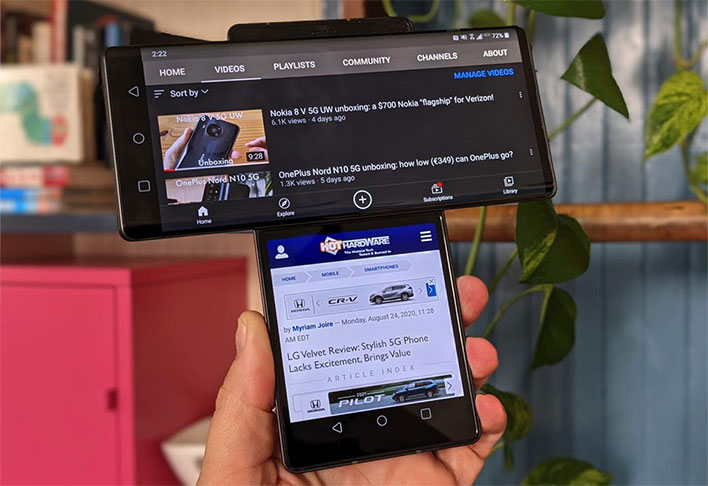LG Confirms Plans To Focus Mobile Resources On Flagship Phones, Outsource Everything Else

After 22 consecutive quarters of operating at a loss, LG's mobile division has finally decided it is time to rethink its strategy. What it ultimately decided on, for the foreseeable future, is to continue focusing on and designing flagship phones (like the ThinQ G7 we reviewed in 2018) as it has been doing, but shifting its mid-range and entry-level handsets to an outsourced business model.
This is a cost-saving measure, and one that is understandable, given how cutthroat the smartphone business is, with so many players. Competition comes from all directions, too. Apple and Samsung generally rule the roost in the flagship space, though several other smartphone makers compete in the top shelf space too.
In the mid-range and entry-level sectors, however, LG is facing stiff competition from Chinese rivals, and that has continued to cut into its bottom line. As a result—and after suffering quarter after quarter of operating losses—it will now outsource those handsets.
A spokeswoman for LG told Reuters that it created a new management title for original design manufacturer (ODM). The hope is that this will put LG in a better financial position to compete with cheaper rivals, including companies like Huawei and Xiaomi.
In terms of global shipments, LG does not register a ping by data collected by Counterpoint, instead falling into the catch-all "others" category. Here is the current global positioning and share breakdown...
- Samsung: 22 percent
- Huawei: 14 percent
- Xiaomi: 13 percent
- Apple: 11 percent
- Oppo: 8 percent
- Vivo: 8 percent
- Realme: 4 percent
- Others: 20 percent
That effectively means LG owns a less than 4 percent share of the worldwide smartphone market currently. This is in stark contrast to earlier in the decade when LG was in the No. 3 spot. For LG to carve out a bigger share, it has to make cheaper handsets, and that is what it hopes to accomplish by outsourcing its mid-range and low-end phones, like the LG Velvet. I assume innovative handsets like the LG Wing we examined will continue to be produced in-house.
In addition, LG is shaking up its mobile workforce. It is getting rid of some research and production jobs, and moving other employees around as it shifts focus to producing flagship phones in-house, and moving everything else to ODMs. Whether or not this strategy ultimately works remains to be seen.

